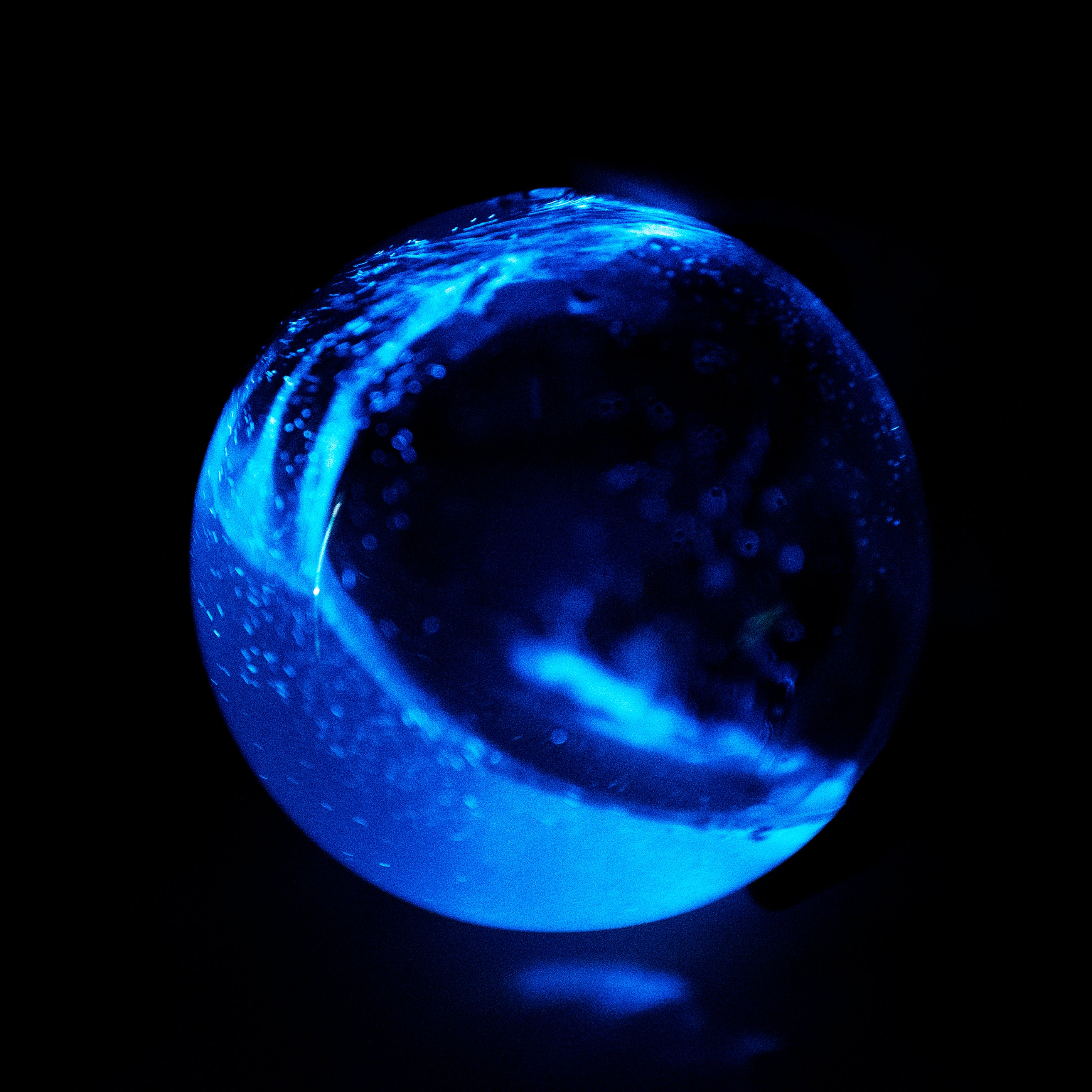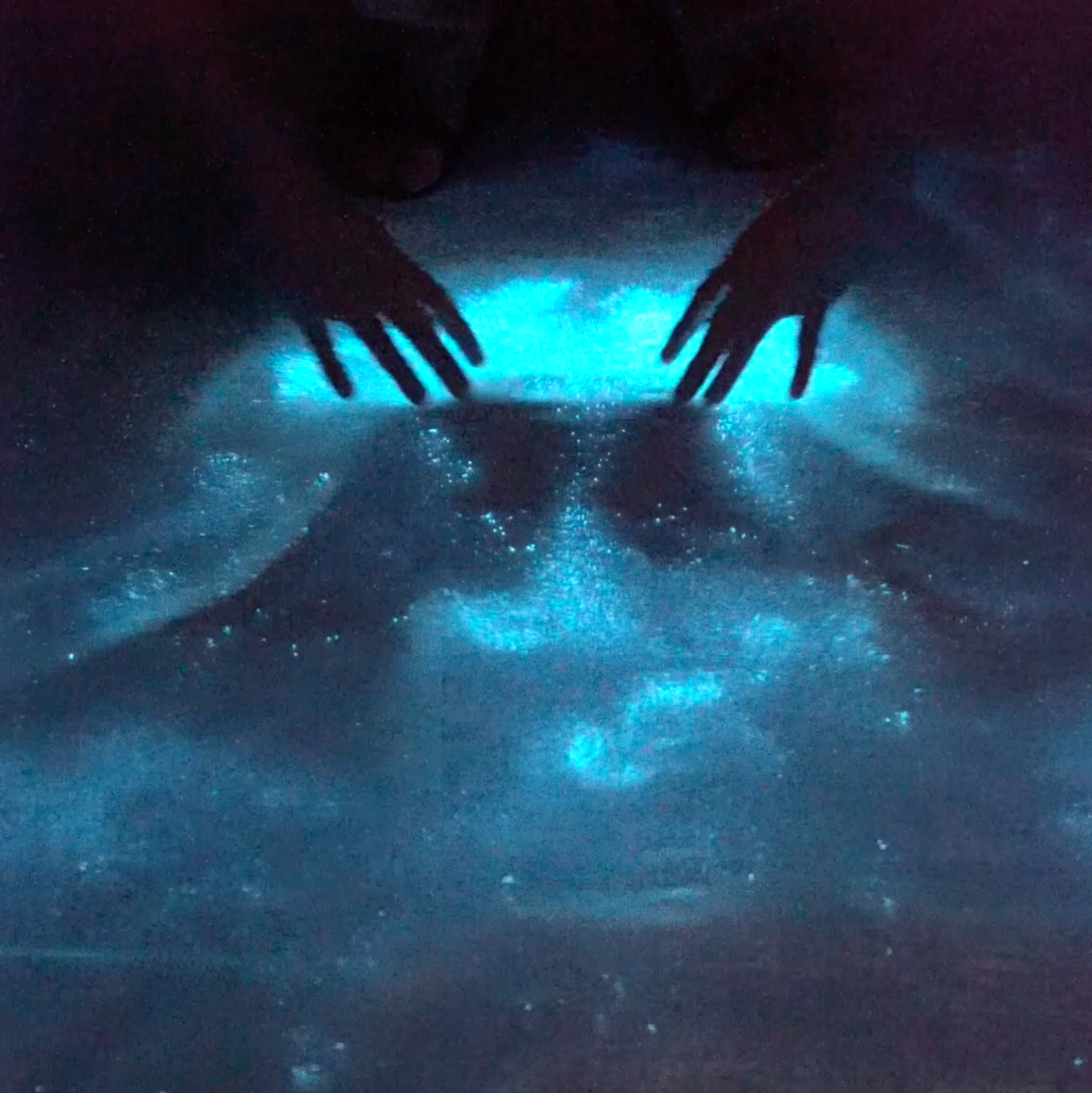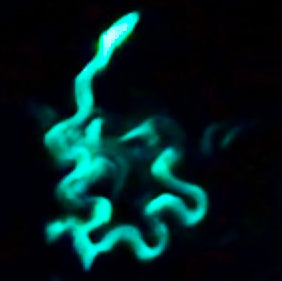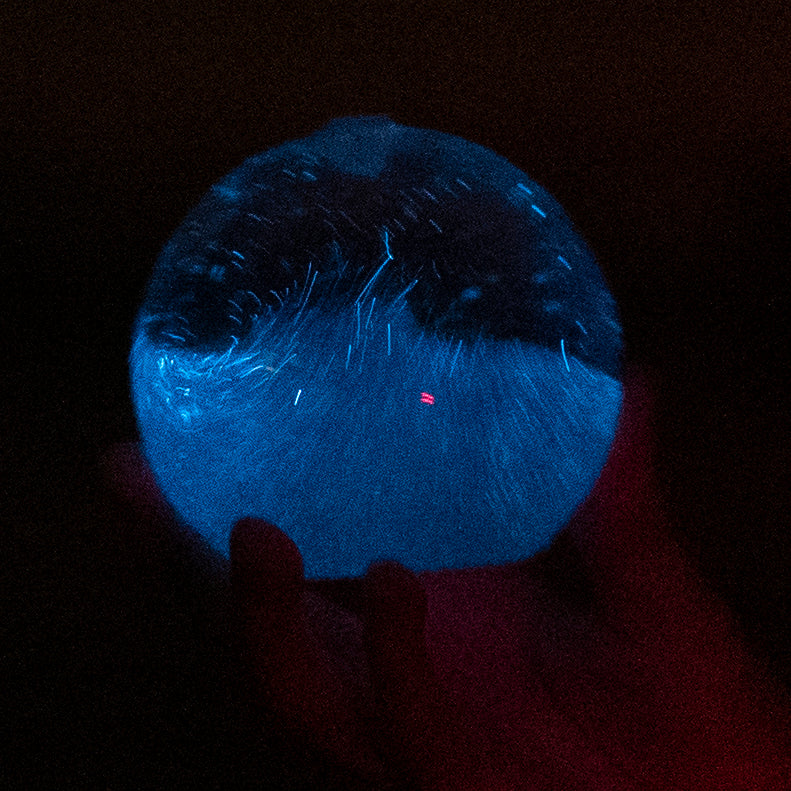The Bioluminescent Bio-Orb Intro

The Bio-Orb contains seawater and tiny plankton or single-cell algae called dinoflagellates. Dinoflagellates (PyroDinos) are a part of the plankton community and thus are the basis for the Ocean Food Chain. All ocean fish and mammals (including whales & dolphins) rely on plankton directly or indirectly for their food source and energy. PyroDinos play a role in this food chain by converting sunlight energy into chemical energy (photosynthesis). Unfortunately, this puts them squarely at the bottom of the food chain. Save some PyroDinos by keeping them as pets.
Photosynthesis:
Our PyroDinos use sunlight as their main source of energy. PyroDinos use sunlight to synthesize foods from carbon dioxide (CO2) and water. PyroDinos generate oxygen (O2) as a byproduct. Thus these little PyroDinos, as a part of the larger plankton community, provide oxygen for us to breathe and help combat global warming by ‘fixing’ carbon (CO2) by removing CO2 from the atmosphere. Did you know that plant-plankton provide more than half the oxygen you are breathing right now? A thank you would be nice.
While photosynthesis constitutes a dinoflagellate’s daytime routine. Their nighttime routine (bioluminescence) gets all the attention. These PyroDinos can either photosynthesize or produce natural light. However they can only do one of these actions at a time and have a daily schedule separating each of these activities. Dinos have an internal biological clock referred to as a Circadian Rhythm to help guide them towards the best time for photosynthesis and bioluminescence.
Circadian Rhythm is defined as physical and behavioral change that follows a daily cycle. This cycle is programed by cycles of daylight and the absence of light. Did you know that you have a Circadian Rhythm too? During the dinoflagellate daytime cycle the only action taking place is photosynthesis. This means that dinoflagellates will not ‘light up’ and produce light (bioluminescence) during their daytime cycle. Interestingly enough their Circadian cycle can be modified over time (several days) by providing light at night and keeping them in a dark area during the day. Over time (several days to a week) they will adapt to their new light cycle.
Bioluminescence is probably what PyroDinos are best known for. Bioluminescence is the production of light by a living organism and occurs only at night, in the dark, when our PyroDinos are gently agitated and physically moved. Many other organisms produce bioluminescence. Some examples are fireflies, jellyfish, mushrooms and bacteria. When you see bioluminescence in a complex organism (like an Angler fish) it is most likely from a symbiotic bacteria that is living within that organism.
Bioluminescence is caused by a chemical reaction between a light emitting molecule and an enzyme that are generically referred to as luciferin and luciferase. During and throughout the dinoflagellate nighttime cycle these light producing molecules are produced. Thus the longer into the nighttime cycle the more potential for light production. The best way to view dinoflagellate bioluminescence is in a very dark room well after the nighttime cycle has begun. So besides the air we breathe, the food we eat and combating climate change these little guys are just fun to watch at night.



Comments